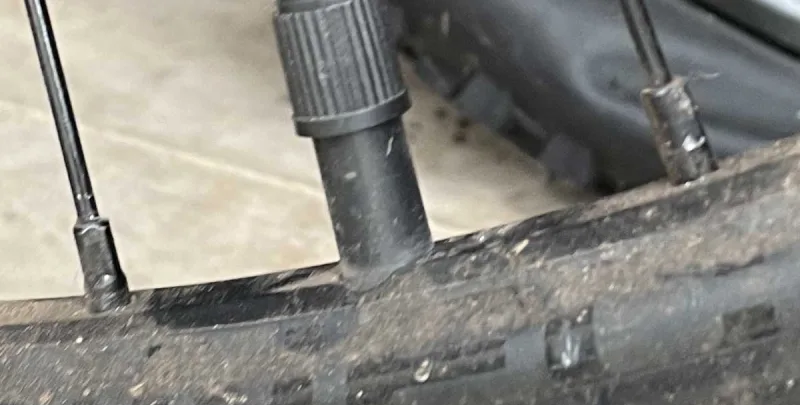Winter is Coming
Even if you’re not considering going out for many rides in the inclement weather that winter brings, every cyclist should take some steps to protect not only their bike, but themselves during the winter months. With limited vision, ice, road salt and mud, the winter months are full of hidden hazards – so how can you prepare?
Servicing is Essential
Servicing your road bike is an essential box to tick no matter what time of year it is, but you’ll regret not regularly performing maintenance during the winter months. Most bike servicing is easy to do, and you won’t need specialist tools. Here is a run down of the top things to check on your road bike:
• Use bike lube and lubricate your gear and brake cables so they can run smoothly and are less likely to become damaged. The headset, bottom bracket, hubs, freewheel, rim brake pivots and pedal axles should all be lubed too.
• In the summer you may be using a lightweight dry lube on your chain but it’s best to swap to a wet lube for the winter. Wet lube last longer and is resistant to the rain, saving you time reapplying it. The downside is that it attracts more dirt, so you’re going to spending slightly more time cleaning.
• Inspect your bike for general wear and tear – but pay particular attention to the inner and outer brake and gear cables. You can fit new end caps to the cable outers to help improve their weather resistance during the winter.
• While you’re inspecting the bike, take a quick look at bottom brackets, hubs, and shifters to ensure they haven’t picked up any damage.
• Keep your bike as clean as possible and wash it down after most winter rides. Salt from gritted roads can eat away at carbon frames and cause long term damage, so it’s best to regularly wash your bike down. You can use specialist cleaning products that help repel water on your bike, keeping it cleaner for longer.
• We recommend booking your bike in for a service at your local road bike shop for a thorough look over occasionally. This allows you to keep on top of the easy maintenance and leave the harder stuff to the experts.
Punctures are a Winter Hazard
While you can get a puncture at any time of year, you’ll often seen more riders fixing punctures during winter. This is normally since most riders spent their entire summer? cycling, leaving the tyres worn and more susceptible to punctures. The weather plays a large role too; the increase in rain means that more debris and hazardous materials are washed onto the road, increasing your chances of damaging the tyre and getting a flat.
A good option is to invest in a heavy duty set of winter tyres. These tyres will be heavier than your standard road bike tyres, but they’ll be able to withstand the impact of road debris and grit better than your summer wheelset. Another benefit is that you’ll seen improved grip on icy and wet surfaces, making winter riding slightly safer.
Some riders set up tubeless tyres to help prevent winter wear and tear. If you’ve bought a road bike recently you may already have tubeless ready tyres. Going tubeless does mean that you will add some weight to your ride, but they’ll be more resistant to punctures if you keep them properly inflated and regularly check them for damage.
Don’t Forget the Brakes
Winter weather brings with it rain which greatly impacts stopping distances. It’s a good idea to keep an eye on your brake pads as they don’t really mix well with harsh winter weather conditions, particularly if you have rim brakes which can get worn down quickly. Cleaning your rim brake pads frequently throughout the winter months can remove any debris and grit and prevent premature wear.
Disc brakes will fare slightly better as they’re further away from the road, but we always recommend looking at them regularly to ensure that they don’t need to be replaced.
Mudguards are a Must
No one likes the thought of being wet and muddy in the cold and mudguards are the perfect way to protect both you and your road bike from the mucky delights of winter riding. Having a full set of mudguards will protect a lot of the bike and reduce the amount of cleaning and general maintenance you’ll have to do. Most road bikes should come with mudguard mounts already in place on the frame.
Ride with Lights
Being visible is essential in the winter when the days are shorter and you’re more than likely going to be riding in the dark. The lack of visibility from both shorter days and the weather reduces how visible you are to drivers on the road, so even a basic set of lights can improve your safety significantly. Pairing a set of rechargeable bike lights with reflectors on your bike and clothing will drastically improve how safe you are in the twilight.
Insuring Your Road Bike
Purchasing a road bike can be quite the investment. Insurance can help protect you against many mishaps; whether you are weekend racing, using your cycle for pleasure or commuting to work daily, insurance protection is particularly important during the winter months.
Find out how Assetsure Bicycle Insurance can protect you and get a quote to insure your bike today.


























